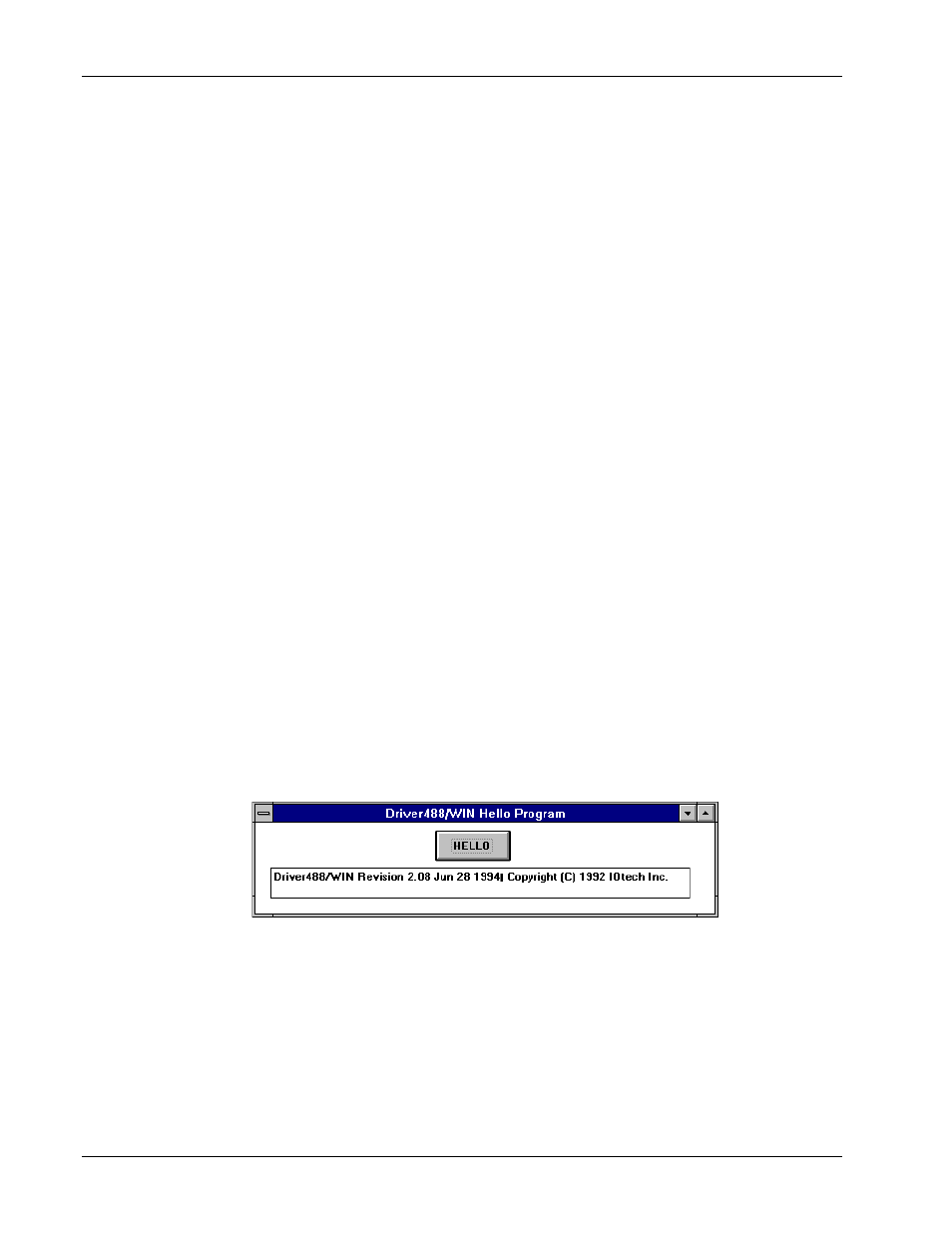Measurement Computing Personal488 rev.3.0 For DOS & Windows 3.Xi User Manual
Page 249

10F. Visual Basic
II. SOFTWARE GUIDES - 10. Driver488/W31
II-234
Personal488 User’s Manual, Rev. 3.0
Project window. Using the VB File menu, select the item Add File and select
IOTVB10.BAS
. At this
point, all Driver488/W31 functions should be accessible.
If you require event handling support, use the custom control written for event handling. The IEEE
488 Event Custom Control support is included in the file
IOTEVENT.VBX
, which should be included in
the Project window. For more information on using the IEEE 488 Event Custom Control, turn to the
following topic “IEEE 488 Event Custom Control” in this Sub-Chapter.
Opening & Closing the Driver
The first Driver488/W31 programming example is designed for simplicity. Its sole purpose is to verify
proper communication with the driver, and upon closing, remove the driver from memory.
In every Visual Basic program using Driver488/W31, a file of declarations must be merged into the
program, typically to the
GLOBAL.BAS
file. In the following example, those declarations have been
omitted from the listing for the sake of brevity.
With the associated source files, the following program can be built using the file
EXAMPLE1.MAK
found on the Driver488/W31 disk.
This example has two declarations that will be used later:
Declare Function FindWindow Lib “User” (ByVal data1$, ByVal data2$)As
Integer
Declare Function SendMessage Lib “User” (ByVal winHandle%, ByVal
message%, ByVal wp%, ByVal lp As Long) As Integer
The form has only one text box with one button . When the button is pressed, the service routine for
Command1_Click
opens the driver. Then the
Hello
function is called, using the handle returned from
the
OpenName
function.
Sub Command1_Click ()
Dim ieee As Integer
Dim hellomsg As String * 247
ieee = OpenName (“IEEE”)
errcode = Hello (ieee, ByVal hellomsg)
Response.Text = hellomsg
errcode = ioClose(ieee)
End Sub
After the Hello Message window is displayed, as shown in the figure, the driver handle is closed. Since
in this application, the handle is created every time the form button is pressed, a potential conflict could
arise if that handle is not closed as we exit this subroutine. Clicking the HELLO button will close this
window.
When the application is closed by the user, the
Unload
event is sent to the form. Our service routine
for
Unload
uses the functions that were declared earlier in the
GLOBAL.BAS
file.
Sub Form_Unload (Cancel As Integer)
‘Unload the IEEE driver
loaderName$ = “Driver488Loader”
winName$ = “Driver488/W31”
Hdriver% = FindWindow (loaderName$, winName$)
asdf = SendMessage (Hdriver%, &H2, 0, 0)
End Sub
Hello Message Window
